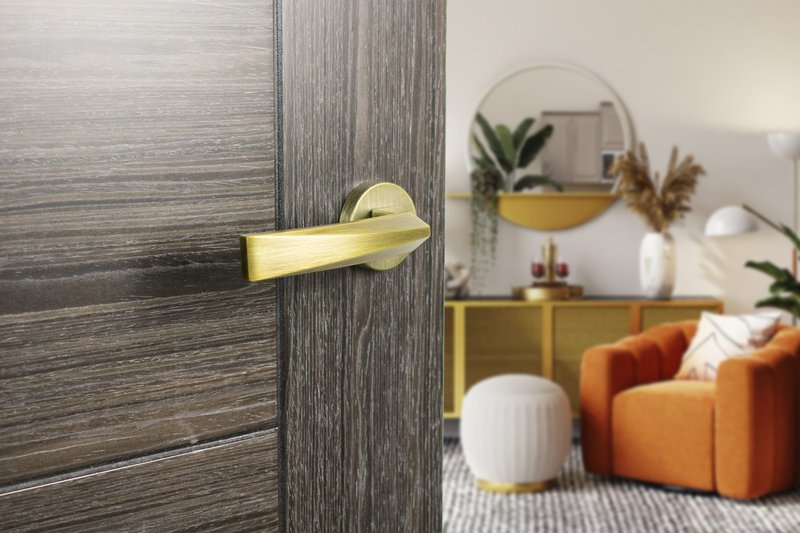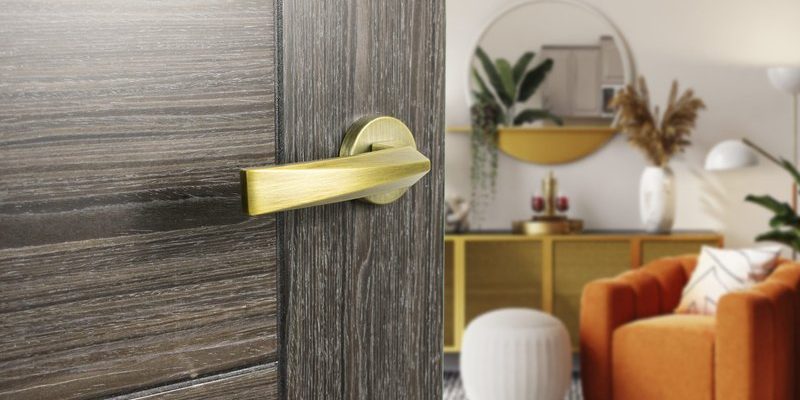
Think of your door knob lever like a rubber band. When it’s working properly, it snaps back into position after you use it. But if that rubber band gets loose or damaged, it doesn’t quite have the same spring. The same goes for your lever; when it sags, it may be due to wear and tear, misalignment, or even issues with the internal mechanisms. If you’ve got a Lever Door Handle from a brand like Schlage or Kwikset, understanding the problem can help you get it back in shape without a lot of fuss.
Let’s dive into some of the common reasons why your door knob lever might be sagging and not springing back, and what you can do to get it back on track.
Understanding How Door Knob Levers Work
Before we start troubleshooting, it’s helpful to know a bit about how door knob levers operate. Typically, a door knob lever consists of a handle, a spindle, and a mechanism inside the door that allows the door to latch and unlatch when you turn the knob. When you turn the lever, it engages the latchbolt, which moves out of the way, allowing the door to open.
The lever is held in place by springs that provide tension, ensuring that it returns to its original position after you let go. If any part of this setup isn’t working correctly, it can lead to that frustrating sagging you’re experiencing. So, what could be causing those springs to lose their grip?
Common Causes of a Sagging Door Knob Lever
There are several reasons your door knob lever might sag and not spring back. Here are some of the most common culprits:
- Worn Internal Springs: Just like anything else, springs can wear out over time. If the internal spring that helps the lever return to its position is worn or broken, you’ll notice it sagging.
- Misalignment: If your door is misaligned, it can cause strain on the lever. This can happen due to settling in your home, changes in humidity, or simply old age.
- Loose Screws: Sometimes, screws that hold the lever in place can loosen. If they’re not tightened properly, the lever might sag.
- Debris Build-Up: Dust and dirt can accumulate around the lever mechanism, causing it to stick instead of springing back smoothly.
Recognizing these potential issues can guide you in the right direction as we explore solutions.
How to Fix a Sagging Door Knob Lever
You might be wondering what you can do to fix that stubborn door knob lever. Here’s a step-by-step approach you can take:
1. Tighten Screws
Start by checking if any screws holding the knob or lever in place are loose. You’ll need a screwdriver for this. Look for screws on the visible part of the knob and those on the plate attached to the door.
– Step 1: Grab a screwdriver that fits.
– Step 2: Tighten any loose screws gently. Don’t overdo it, as overtightening can cause more damage.
If you notice that the lever is still sagging after tightening, keep going to the next step.
2. Check for Misalignment
A misaligned door can be a common culprit. If the door doesn’t close properly, it may put pressure on the lever. Here’s how to spot and fix misalignment:
– Step 1: Close the door and see if there’s any gap around the edges.
– Step 2: If one side is higher than the other or doesn’t sit flush, it might need adjustment.
– Step 3: You may need to adjust the hinges or the latch plate. Loosen the screws slightly and reposition as needed before tightening them again.
This adjustment can improve the overall function of the door, helping the lever spring back more effectively.
3. Replace Internal Springs
If the problem persists, the internal springs may need replacing. This step is a bit more technical, but it’s doable.
– Step 1: Remove the lever by unscrewing it from the door.
– Step 2: You’ll see the internal mechanism. Look for the spring and see if it’s worn or broken.
– Step 3: Purchase a replacement spring from a hardware store or online. Follow the instructions included with your new spring.
If you find this process too complex, you might want to call a professional to help.
4. Clean the Mechanism
Sometimes, it’s just a matter of cleaning. Dust and grime can build up over time and affect the lever’s operation.
– Step 1: Carefully remove the lever as mentioned above.
– Step 2: Use a soft cloth to wipe down the mechanism and remove any debris.
– Step 3: Consider applying a few drops of lubricant specifically designed for door hardware.
This can help the lever move freely and return to its original position.
When to Call a Professional
If you’ve tried all the above steps and your door knob lever is still sagging, it might be time to call in a professional. Sometimes, the mechanism can be damaged beyond simple repairs.
Experienced locksmiths or handyman services can diagnose the issue quicker and offer solutions that will save you time and frustration.
Here’s the thing—when you’re dealing with door hardware, you want it to function smoothly and safely. A professional can ensure everything is installed correctly and working as it should.
Preventing Future Problems
To avoid dealing with a sagging door knob lever in the future, consider these preventive measures:
- Regular Maintenance: Check your knobs and levers periodically for loose screws or signs of wear. A quick maintenance check can save you bigger headaches down the line.
- Avoid Overloading: Don’t hang heavy items from your door lever. This extra weight can stress the mechanism and lead to sagging.
- Environmental Considerations: Keep an eye on changes in humidity. If you’re in a very humid area, it might affect your door’s alignment and hardware.
Taking these steps can extend the life of your door hardware and keep everything in working order.
A sagging door knob lever can be a bit of a nuisance, but understanding the problem is the first step to fixing it. Whether it’s loose screws, misalignment, or worn springs, most issues are solvable with a little elbow grease and know-how. Remember, you don’t always need a professional to fix things—sometimes, you just need to pay attention to what the hardware is telling you.
By keeping up with regular maintenance and addressing problems quickly, you’ll ensure your door knob levers stay in good shape for years to come. So, the next time you notice that familiar sag, you’ll know exactly what to do.
